Why Stocks Go Up and Down
$9.99
| Author(s) | , |
|---|---|
| Format |
|
| Pages |
492 |
| Publication Year |
2013 |
Why Stocks Go Up and Down is an in depth introduction to stocks and bonds. It explains the basics of of financial statement analysis, cash flow generation, stock price valuation, and more. Commonly misunderstood terms such as “capitalize”, “equity,” and “diluted earnings” are explained clearly. Stock valuation methods including price/earnings ratio, price/cash flow ratio, and Enterprise Value / EBITDA are covered. The book is about fundamentals; it is not an investment system or “how to make a million dollars in the market”.
Introduction:
There are many popular books about investing which try to convey wisdom without first conveying adequate knowledge. Why Stocks Go Up and Down does just the opposite. It presents the basic fundamental knowledge that all investors need. This will enable you to get more value from other books which deal with specific aspects or approaches to investing. Why Stocks Go Up and Down goes well beyond other introductory investment books. It will not insult your intelligence. In fact, it will go into more detail in some areas than you may need, but by doing so, the major concepts should stay with you, and you will not find yourself having more questions than you started with.
The book is the outgrowth of introductory investment courses we have taught at the college level and through professional organizations such as the Boston Security Analysts Society for more than 20 years. Our students are newcomers to the investment business who have had little or no experience with accounting, finance, or the stock market. The book has evolved to provide them—and other interested investors—with the fundamentals needed for successful investing.
Part 1 introduces the basic concepts of business ownership and financial statement analysis. The emphasis on accounting may not seem relevant at first, but stock prices are directly related to financial statements. To ignore this would be an oversimplification, and would leave readers with major gaps in their knowledge. Part 1 also covers the process of “going public” and the difference between primary and secondary equity stock offerings. This section will clear up many common misconceptions.
Part 2 is about bonds and preferred stock (which is quite different from common stock). To understand a company and its stock price behavior, it is important to understand all the instruments a company can use to raise capital. It is, however, possible to skip over Part 2 without losing the continuity of the other parts of the book. In fact, many readers skip from Part 1 to Part 4 in their first time through the book.
Part 3 explains more fully how income statements and balance sheets relate to stock prices. When you understand concepts such as write-offs, or the difference between earnings and cash flow, you will be better able to understand stock price behavior. Part 4 discusses stock price valuation. It will give you a framework for understanding stock prices, and point to what you should watch for in your investments. It will help you avoid many mistakes that new investors make. This is the part that most interests new investors, but readers will get more value from Part 4 by reading the other parts first. The final chapter is an investment analysis of Abbott Labs that draws on many of the concepts in the book, and takes readers through the thinking process of a professional investment analyst.
A glossary at the end gives succinct definitions of many terms used in the book. Investing is like many other aspects of life: the more thoroughly you prepare, and the more you work at it, the better you will do. There is no substitute for watching your stocks respond to day-to-day news concerning the economic environment, the stock market, and the company you are analyzing. The background that you should take from this book will help you gain that experience much faster.
Contents:
- STARTING A BUSINESS
- OWNERSHIP AND STOCK
- BORROWING MONEY AS THE COMPANY GROWS
- RATIOS INVESTORS WATCH
- GOING PUBLIC—PRIMARY AND SECONDARY OFFERINGS
- EARNINGS DILUTION—JMC GOES PUBLIC
- FINANCING GROWTH: SELLING NEW STOCK VS. SELLING NEW BONDS
- BONDS
- WHY BONDS GO UP AND DOWN
- BONDS: ADVANCED TOPICS
- CONVERTIBLE BONDS
- PREFERRED STOCK
- CONVERTIBLE PREFERRED STOCK AND HYBRID PREFERRED SECURITIES
- FIXED ASSETS, DEPRECIATION, AND CASH FLOW
- COST VERSUS EXPENSE, CAPITALIZING ASSETS, AND WRITE-OFFS
- CASH FLOW
- INVENTORY ACCOUNTING—IMPACT ON COMPANY EARNINGS
- PRICE/EARNINGS AND OTHER EVALUATION RATIOS: WHEN IS A STOCK HIGH OR LOW?
- WHY STOCKS GO UP AND DOWN
Why Stocks Go Up and Down By William H. Pike, Patrick C. Gregory pdf
32 reviews for Why Stocks Go Up and Down
Clear filtersOnly logged in customers who have purchased this product may leave a review.

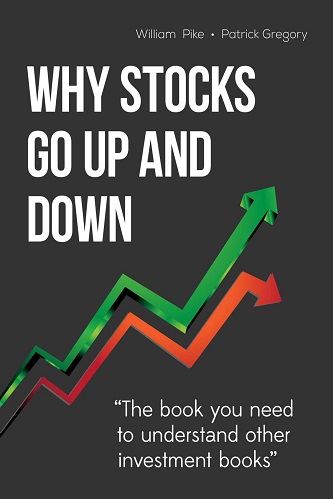

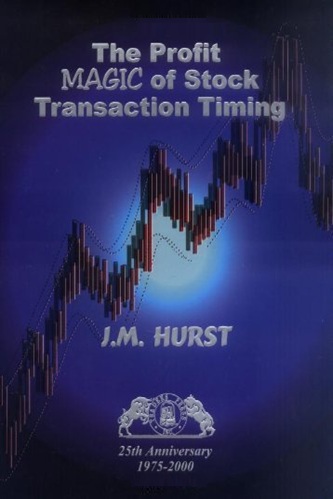


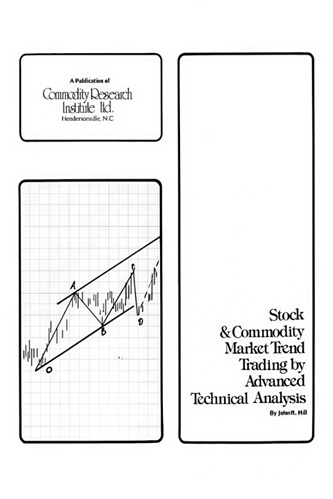

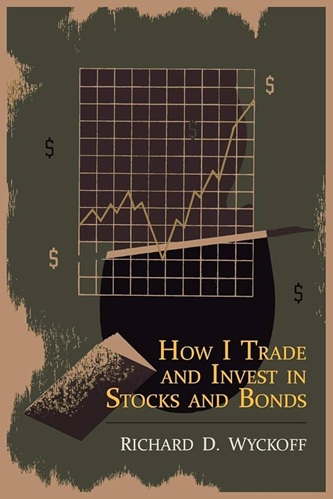
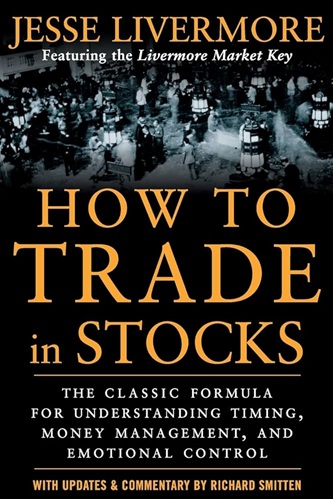
Rex Christensen (verified owner) –
Great book. Very thorough and what I was looking for.
Trevor Wilkins (verified owner) –
Very good book, very detailed and comprehensive
Alejandra Frazier (verified owner) –
very good book if you’re looking for something that’s builds an understanding from the ground up.
Ryder Case (verified owner) –
Perfect book for making fundamentals of stock movements clear. This is not about how to pick stocks but makes a platform for reaching there. Real gem of a book. Authors have succeeded in sending messages and explaining concepts to readers in such easy jargon free language that I am in awe of the clarity of concepts in mind of authors and their teaching skills. Absolutely remarkable. They have great understanding for readers’ thought process and have written each line considering what might come next in readers’ mind. This should be an investment classic. Such great writing is only seen in Common Stocks and Uncommon profits in my view. Worth 100 times more than its price. Just dont think and go for it if you are serious beginner.
Callum Rosales (verified owner) –
I really recommend this books for anyone starting in the stock market and really wants to learn the fundamentals of valuation to them move to more difficult books!!!
Yareli Ashley (verified owner) –
A must read for investors
Haley Shaffer (verified owner) –
No great information for people from the area, no advanced knowledge, nothing usefull.
Jessie Reid (verified owner) –
An excellent introduction to the basics of securities analysis. If, like me, you’re a complete beginner, this is the book for you. The section on the fundamentals of accounting is especially informative. I’m looking forward to putting some of the tools outlined into practice.
Cristian Davila (verified owner) –
I have read many books on stock market investing but this is the book that quenches my thirst to a degree indescribable. I picked it up as it was in the recommendation list of Michael burry. I’ve never written a review before so you can see why I took the pain to do so.
This book is for beginners and professionals alike. For Indian readers I recommend the below books post which you can compound your money handsomely. Read in the exact order and you’re done with investing lessons:
1. The intelligent investor: Ben Graham
2. Value Investing and Behavioural Finance: Parag Parikh
3. Why stocks go up and down: William Pike
4. One up on Wall Street: Peter Lynch
5. Beating the street: Peter Lynch
6. The Little book that builds wealth: Pat Dorsey
7. The little book that beats the market: Joel Greenblatt
8. Common Stock and Uncommon profits: Philip Fisher
9. Security Analysis: Ben Graham
10. You can be a stock market genuis: Joel Greenblatt.
Hope this helps and you won’t regret these books regardless of price
Isabel Hancock (verified owner) –
It teaches you to understand all the many concepts needed in the investing world. It allows you to read annual reports and balance sheets and so on. very deep and complete
This book should be a must for investing begginers and people with no related background, which was my case.
Kylen Quintero (verified owner) –
I Wanted To Improve My Understanding Of The Stock Market And Investment Strategies. This Book Has Done That For Me And So Much More.
Rayne Rojas (verified owner) –
A great starting point for anyone that has interest in learning about investing as well as a great refresh on topics for those who have some experience. The last chapter provides a very useful framework to follow when researching a potential investment target, one that can prove valuable for even the more experienced investor.
Malachi Pratt (verified owner) –
I have read over 20 investment books in the last year. This is hands down on of the best books on the stock market. If you really want to understand the numbers that drive a security up and down this is your guide. Easy to read, but I would recommend having a pen and paper handy to get the best out of this book.
Dion Olson (verified owner) –
This is the best tutorial on stock investing i have ever read. I am a partner in a venture capital firm and also run an investor relations/financial PR firm in NYC. This book is now required reading for all my employees. The author does an amazing job explaining how to analyze a business’ fundamental value, as well as what drives movement in the stock market. I have met more than a few successful portfolio managers and financial professionals in Boston and elsewhere who credit the author with helping them achieve success.
Josue Ballard (verified owner) –
This is an outstanding book to learn about starting and running a company from the financial perspective…..i.e., starting a company, financial management of the company, financial reports – balance sheet, income statement, etc., how to create and sell stock in the company, how to take it public – i.e., list it on the stock market, and everything related to all of these concerns….explains everything in detail….starts from the very beginning of creating a company and goes from there….assumes you know nothing about the subject….when you finish the book you will know everything about starting a company, financial management of the company and creating and offering stock in the company, including taking it public…
Annalise Olson (verified owner) –
Not for finance majors. Love that it is written for beginners who need definitions, quick to understand, excellent follow up to Benjamin Graham’s Intelligent Investor & Interpretation of Financial Statements. Thank you Mrs. Pike & Gregory for a useful presentation. Thank You!
Banks Solomon (verified owner) –
Everything was perfect thank you!
Colin Morse (verified owner) –
The substance this book carries with it is tremendous- Especially for a non-professional but experienced investor.
Kinley Kline (verified owner) –
You have to know what a business is if one is to play with the stock market. That’s why this book is so good.
Michelle Cortes (verified owner) –
Uniquely engaging and clear book that will take you from details to action. Unlike many other books in this space, this one is a page-turner, and it will truly lift your level of competency
Edison Powers (verified owner) –
Excellent book
Dexter Livingston (verified owner) –
I guess I didn’t understand the purpose of this book before purchasing it. Calling this a “simple guide for beginning investors” is far from correct. It’s complex and pretty bland, leaving me feeling reminiscent of the days of reading college textbooks. If you are looking for a very thorough, textbookish outline of business and investing, this is the book for you. If you’re looking for a simple guide to investing and the stock market, turn away.
Ryder Bauer (verified owner) –
This book is a great tool for putting all the pieces together when it comes to analyzing a business or the market. Even if you’re a little more experienced and knowledgable it serves a good purpose in bringing it all back to basics. Sometimes it is easy to forget how all the various pieces fit together and act in unison. Recommended for both novices and more knowledgable practitioners.
Frederick Doyle (verified owner) –
This book creates a fantastic foundation for stock investing, helping to untangle the mess of accounting on financial statements. From here I would recommend moving on to value investing by Bruce Greenwood and competition demystified.
Eduardo Villegas (verified owner) –
I found this book to be a great tool to help me understand the basics of stocks and bonds, as I had only a minimal understanding coming in. It includes an extensive glossary but I rarely used it except to check my understanding. The final chapter shares its title with the book, concluding with a particularly valuable analysis of Abbott Labs stocks – a very effective way to convert the theory into a practice illustration. I have never seen this before. Strongly recommended.
Ramon Jacobs (verified owner) –
If you are starting your investment life. Ensure to read page by page and understand it. Create a copy of excel spreadsheet and understand the intricasies in the first 5 chapters. Treasure it.
Skip over all the Bonds, Preferred Stock Section, Just review quickly.
Run to Part 3, read understand and recreate. Practice all that with a few stock.
Congrats, You have graduated the basic Accounting and Investing nuances, Now onto Intelligent Investors
Ailani Bowen (verified owner) –
I have been investing for over 10 years and read a number of investment books. When I got this book I was both skeptical and intrigued by the subtitle, “The Book You Need To Understand Other Investment Books”, but after going through it, I can understand why the authors call it that. A lot of investment fundamentals are covered in depth that other books assume you know already.
Positives: 1. Good introduction to balance sheets and income statements without taking an accounting course. Numerical examples and calculation are well laid out and easy to follow. 2. Good discussion of cash flow and how it is used by investment analysts. 3. The last chapter is a case study of Abbott Labs. I found it really helpful in understanding what an investment analyst does.
Strongly recommended!
Mylah Lloyd (verified owner) –
This book will get you started in understanding stocks and bonds, but you will also find yourself referring back to it again and again as your knowledge expands through further study. The authors introduce the most basic concepts and develop them right up through the point of making an investment decision. Their coverage of the topic is encyclopedic, so their book can fill in gaps even for experienced investors.
Pike and Gregory contend that this book will enable you to understand other investment books. I can affirm that it provides the necessary foundation for reading my own book, Financial Statement Analysis: A Practitioner’s Guide (co-authored with Fernando Alvarez), which focuses on the accounting tricks that companies use to mislead investors. One thing is for sure: You should not venture into the deep water of the securities markets without the knowledge masterfully presented in Why Stocks Go Up and Down.
Camilla Stuart (verified owner) –
There is A LOT of information in this book. This is a great place to start for anyone thinking they might like to go to school in Business/Finance/Accounting. It doesn’t cover theory on stock prices, but rather the actual calculation of stock and bond prices. In other words it’s not a book for those attempting to make it rich in the stock market, but rather one to help understand how a business works, and what goes into deciding whether the price of a stock or bond is over/undervalued. I enjoy having it as a reference guide for calculating ratios, even though it’s probably quicker to simply google them. Still, it’s one of those books that has so much useful information that it’s worth having on your shelf.
Zaire Jenkins (verified owner) –
This is a great book for anyone who wants to learn not only why stock prices fluctuate but how businesses are structured. My only criticism has nothing to do with the material itself, but that there are quite a few grammatical errors throughout the book.
Keyla Collier (verified owner) –
This book is an academic reading on the creation of stocks. Stock buying decision making is left up to the reader.
Carmen Byrd (verified owner) –
This book educates its readers on fundamental analysis of stocks. It’s a great book for any non-professional analyst who wants to pick his/her own stocks.
The book broadly has three sections:
1. It uses the example of a small business to explain how financial statements are constructed and how capital flows in and out of the business.
2. It dives deeper into various types of funding available to businesses and explains the various types of securities that an analyst might encounter on the balance sheet.
3. It uses the example of an actual company and shows how the concepts taught in the previous sections tie together to create an investment case for the company.
Overall, I would say this book deserves a place on the same shelf as other investment classics such as Security Analysis, The Intelligent Investor, Common Stocks Uncommon Profits, and One Up On Wall Street. Highly recommend it!